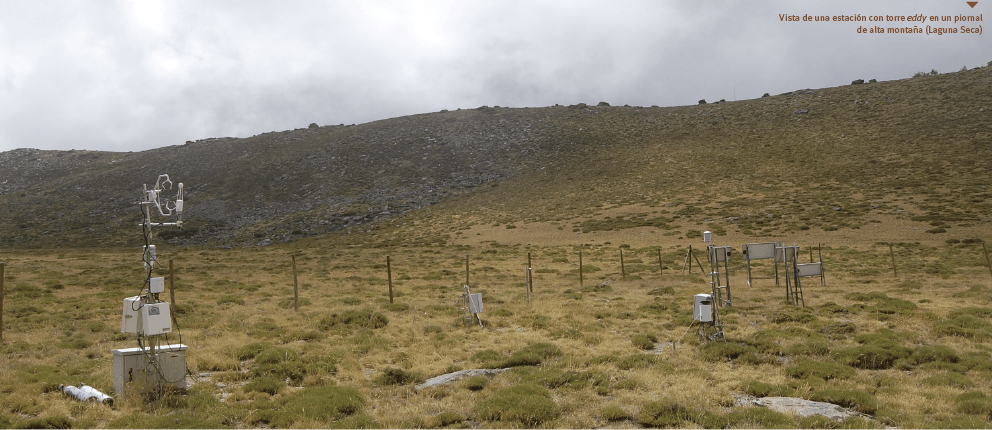Aims
The main aim of measuring the CO2 exchanges in different ecosystems of Sierra Nevada is to quantify the quantity of CO2 that they assimilate. In addition, complementary measures of the state of the vegetation, soil, and atmosphere enable us to study the main factors controlling whether the ecosystem acts as a CO2 source or sink. Finally, after quantifying the capacity of the ecosystem to assimilate CO2 and determine the factors on which this depends, we can act accordingly, strengthening the main sinks.

Method and effort
By the micrometeorological system eddy covariance, we continuously measure the CO2 exchanges between the earth surface and the atmosphere. This system is based on taking measurements from the air without disturbing the ecosystem. This requires instrumentation capable of working with a quick response and at a high sampling frequency (i.e. 10 Hz), providing information on exchanges at scales of hours or even less. Despite the difficulties in continuously taking and storing the measurements, it has been demonstrated that the integration on an annual scale of CO2 exchange at the scale of the ecosystem is possible, thus making it possible to quantify the CO2 assimilated by an ecosystem over a long time period (seasons, years, decades, etc.). The eddy covariance system is used by the international network FLUXNET, with research members worldwide.
Periodicity
The data of CO2 and water-vapour exchange as well as the complementary information is registered every 30 minutes. The installations are visited monthly to calibrate the instruments, supervise the functioning, and download the stored data.
References
Reverter, B.R., Sanchez-Cañete, E.P., Resco, V., Serrano-Ortiz, P., Oyonarte, C. y Kowalski, A.S. 2010. Analyzing the major drivers of NEE in a Mediterranean alpine shrubland. Biogeosciences, 7: 2601-2611.
Serrano-Ortiz, P., Marañón-Jiménez, S., Reverter, B.R., Sánchez-Cañete, E.P., Castro, J., Zamora, R. y Kowalski, A.S 2011. Post-fire salvage logging reduces carbon sequestration in Mediterranean coniferous forest. Forest Ecol. Manag., 262: 2287-2296.